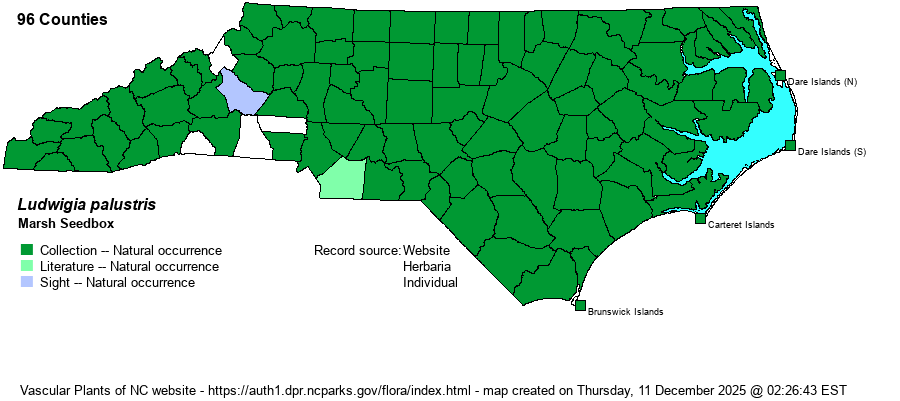| Identification | This is one of three decumbent, creeping members of the genus in NC, the one that is very familiar to biologists, even if they do not bother with "belly-plants" growing on mudflats and shores. It grows to about 2 feet long, rooting at nodes, and has numerous pairs of opposite leaves. Each leaf is elliptical, entire, but only about 1-inch long and half as wide; the leaf blade is attenuated to the stem. From many leaf axils grow a single flower, essentially sessile, with no petals. The 4 sepals are light yellow, appearing "petal-like", and each one is ovate in shape, yielding a flower about 1/8-inch long, barely visible even when you bend down to see the plant close-up. In this species, the floral tube and capsule contains vertical dark green lines, which should help separate it from the quite similar but rare L. repens, which has no such dark green stripes on the capsule. L. brevipes, the other decumbent member of the genus, has narrower and spatulate leaves and the flower and capsule are on a definite stalk. L. palustris has a habit of growing in matted masses, and thus it can be tricky to see the leaf shape unless you spot a single stem. Nonetheless, in summer and fall, if and when you see a matted plant with small and elliptical, opposite leaves, growing on mud or other damp ground, there is a good chance you have found this species. For inexperienced people, you may need to see flowers and a capsule to be sure what you have. | |

